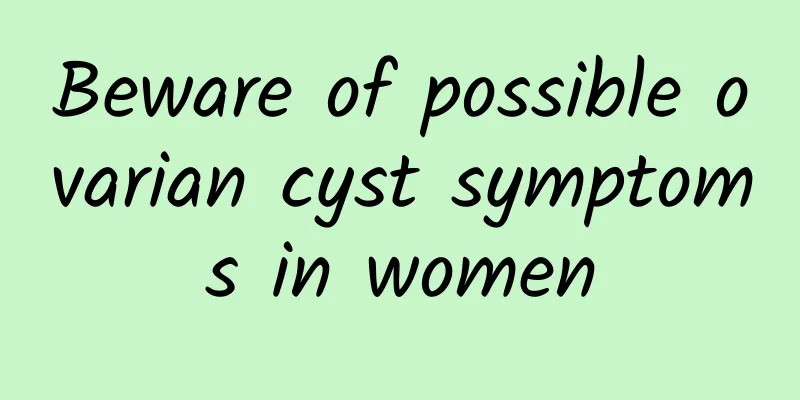Experts answer common hazards of uterine fibroids

|
For most female friends, uterine fibroids are very harmful and seriously harm women's health. So what are the common harms of uterine fibroids ? Here we will tell you about the common harms of uterine fibroids. In general, the common hazards of uterine fibroids are: 1. Infection and suppuration are the most common hazards of uterine fibroids. Uterine fibroids can cause pelvic congestion and infection. The infection is mostly caused by the torsion of the tumor pedicle, while blood-borne infection is extremely rare. After infection, a few patients will form abscesses in the tumor tissue, while the rest will show suppuration. 2. Adhesion or inflammation. After the subserosal uterine fibroid pedicle is twisted, intestinal adhesion will occur, which will be infected by intestinal bacteria. The inflamed fibroid will adhere to the uterine appendages, causing suppurative inflammation, which is also a common hazard of uterine fibroids. On the other hand, fibroids can also cause pathogenic bacteria to invade other uterine organs due to bleeding, causing gynecological inflammation such as adnexitis and pelvic inflammatory disease. 3. Free fibroids. Subserosal uterine fibroids can twist at the pedicle, causing acute abdominal pain. If the condition is serious and surgical treatment is not performed immediately, the pedicle may be broken and free fibroids may form. This is also a common hazard of uterine fibroids. Of course, twisted fibroids can also drive the entire uterus, causing axial torsion of the uterus (mostly near the internal opening of the cervical canal). 4. Secondary anemia. The harm of uterine fibroids also includes excessive menstrual bleeding. Over time, it will cause secondary anemia and even promote anemic heart disease. In severe cases, patients will experience adverse symptoms such as general fatigue, pale complexion, palpitations and shortness of breath. 5. Infertility or miscarriage. Uterine fibroids patients suffer from infertility due to the compression of fallopian tube entrance by fibroid tissue in the uterine cornu, which causes the uterus to deform and hinders the implantation of fertilized eggs. In addition, statistics show that the spontaneous abortion rate of fibroid patients is also higher than that of ordinary people, with a ratio of 4:1. The above is an introduction to the hazards of common uterine fibroids. I hope it will be helpful to everyone. Once you have uterine fibroids, you must go to the hospital for treatment in time to avoid serious delays in the disease. |
<<: Brief introduction: Several common diagnostic methods for uterine fibroids
>>: Experts explain the complications of two major ovarian cysts
Recommend
Two common causes of cervical erosion
Cervical erosion is a relatively common gynecolog...
The key to postpartum exercise to reduce belly fat: the degree of rectus abdominis separation
After 10 months of hard pregnancy, the baby is fi...
Experts teach you how to correctly and effectively prevent candidal vaginitis
When it comes to candidal vaginitis, many female ...
Common knowledge about the diet of patients with adnexitis
The diet of adnexitis has many requirements in li...
Unscientific female vulva cleaning can lead to the cause of adnexitis
Since many women do not know much about the cause...
Here are some treatments for vaginitis
Vaginitis is a very common gynecological inflamma...
Key points for diagnosis of hyperprolactinemia
Breast examination is extremely important for pat...
Does menopause mean there is no water?
Menopause is a stage in the female physiological ...
What should I do if my period is delayed during breastfeeding?
What should I do if my period is delayed during b...
Long-term depression can cause uterine fibroids
Uterine fibroids are the most common benign tumor...
What are the symptoms of early uterine fibroids? Can uterine fibroids cause vaginal bleeding?
The incidence of cervical fibroids is very high, ...
How to remedy abortion and sexual intercourse? Do you need to use contraception after abortion?
Although abortion is a relatively minor operation...
What foods can thicken the endometrium?
Endometrial thickening is a gynecological disease...
What are the precautions for drug treatment of uterine fibroids
Medication is a commonly used method for treating...
What discomfort does pelvic effusion cause?
What discomfort can pelvic effusion cause? Pelvic...









